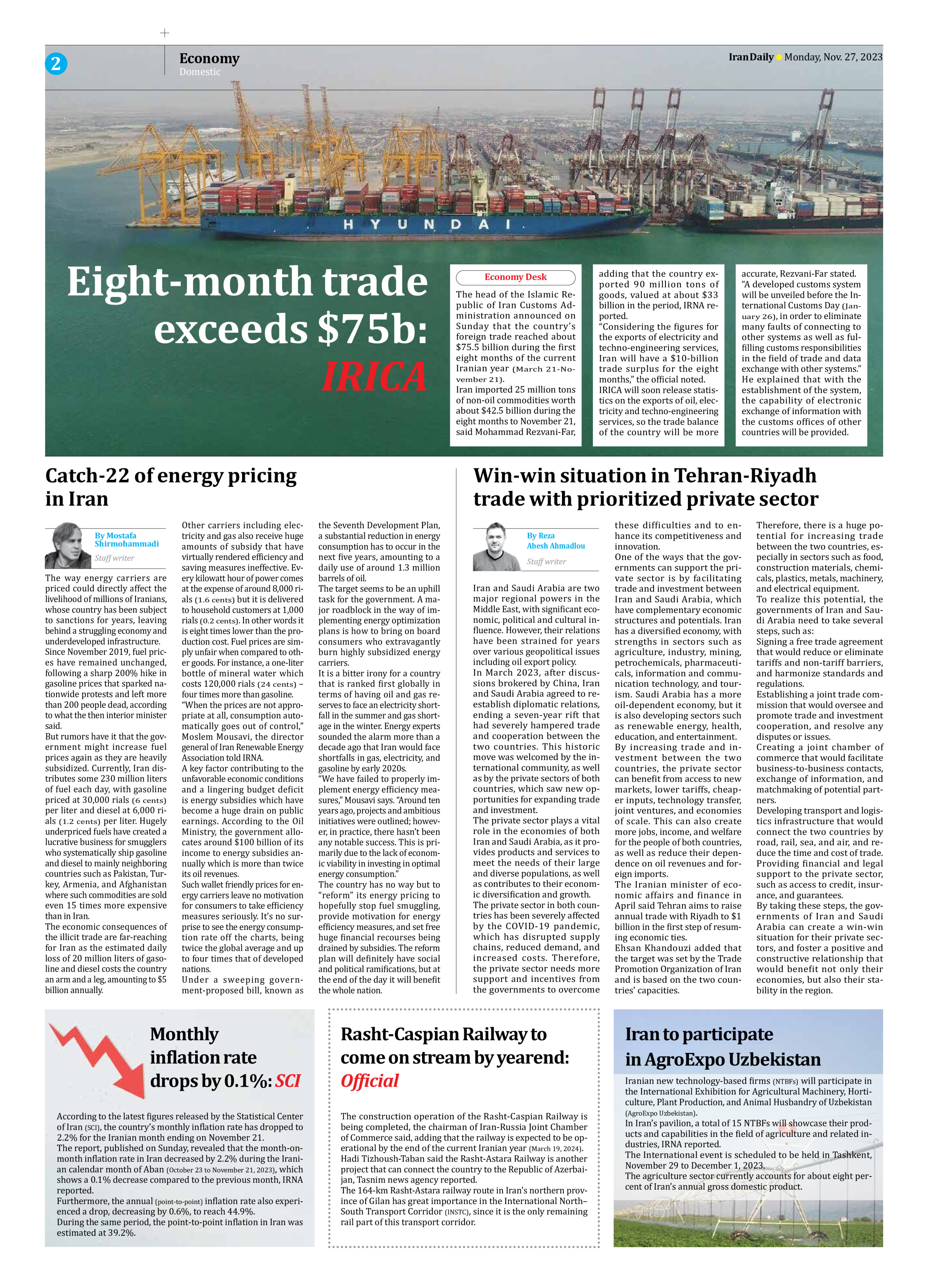
Win-win situation in Tehran-Riyadh trade with prioritized private sector
By Reza Abesh Ahmadlou
Staff writer
Iran and Saudi Arabia are two major regional powers in the Middle East, with significant economic, political and cultural influence. However, their relations have been strained for years over various geopolitical issues including oil export policy.
In March 2023, after discussions brokered by China, Iran and Saudi Arabia agreed to reestablish diplomatic relations, ending a seven-year rift that had severely hampered trade and cooperation between the two countries. This historic move was welcomed by the international community, as well as by the private sectors of both countries, which saw new opportunities for expanding trade and investment.
The private sector plays a vital role in the economies of both Iran and Saudi Arabia, as it provides products and services to meet the needs of their large and diverse populations, as well as contributes to their economic diversification and growth.
The private sector in both countries has been severely affected by the COVID-19 pandemic, which has disrupted supply chains, reduced demand, and increased costs. Therefore, the private sector needs more support and incentives from the governments to overcome these difficulties and to enhance its competitiveness and innovation.
One of the ways that the governments can support the private sector is by facilitating trade and investment between Iran and Saudi Arabia, which have complementary economic structures and potentials. Iran has a diversified economy, with strengths in sectors such as agriculture, industry, mining, petrochemicals, pharmaceuticals, information and communication technology, and tourism. Saudi Arabia has a more oil-dependent economy, but it is also developing sectors such as renewable energy, health, education, and entertainment.
By increasing trade and investment between the two countries, the private sector can benefit from access to new markets, lower tariffs, cheaper inputs, technology transfer, joint ventures, and economies of scale. This can also create more jobs, income, and welfare for the people of both countries, as well as reduce their dependence on oil revenues and foreign imports.
The Iranian minister of economic affairs and finance in April said Tehran aims to raise annual trade with Riyadh to $1 billion in the first step of resuming economic ties.
Ehsan Khandouzi added that the target was set by the Trade Promotion Organization of Iran and is based on the two countries’ capacities.
Therefore, there is a huge potential for increasing trade between the two countries, especially in sectors such as food, construction materials, chemicals, plastics, metals, machinery, and electrical equipment.
To realize this potential, the governments of Iran and Saudi Arabia need to take several steps, such as:
Signing a free trade agreement that would reduce or eliminate tariffs and non-tariff barriers, and harmonize standards and regulations.
Establishing a joint trade commission that would oversee and promote trade and investment cooperation, and resolve any disputes or issues.
Creating a joint chamber of commerce that would facilitate business-to-business contacts, exchange of information, and matchmaking of potential partners.
Developing transport and logistics infrastructure that would connect the two countries by road, rail, sea, and air, and reduce the time and cost of trade.
Providing financial and legal support to the private sector, such as access to credit, insurance, and guarantees.
By taking these steps, the governments of Iran and Saudi Arabia can create a win-win situation for their private sectors, and foster a positive and constructive relationship that would benefit not only their economies, but also their stability in the region.







